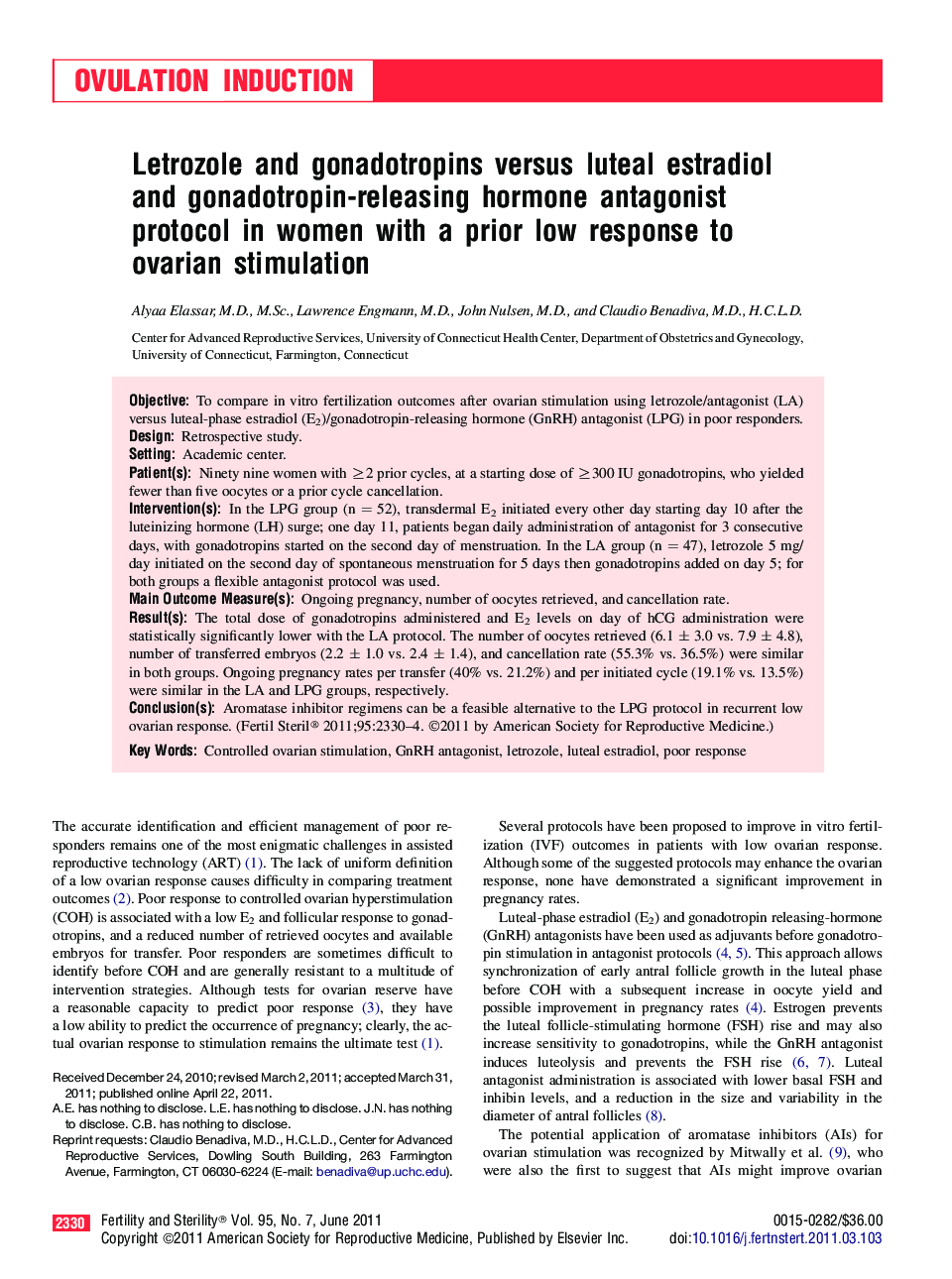| Article ID | Journal | Published Year | Pages | File Type |
|---|---|---|---|---|
| 3937776 | Fertility and Sterility | 2011 | 5 Pages |
ObjectiveTo compare in vitro fertilization outcomes after ovarian stimulation using letrozole/antagonist (LA) versus luteal-phase estradiol (E2)/gonadotropin-releasing hormone (GnRH) antagonist (LPG) in poor responders.DesignRetrospective study.SettingAcademic center.Patient(s)Ninety nine women with ≥2 prior cycles, at a starting dose of ≥300 IU gonadotropins, who yielded fewer than five oocytes or a prior cycle cancellation.Intervention(s)In the LPG group (n = 52), transdermal E2 initiated every other day starting day 10 after the luteinizing hormone (LH) surge; one day 11, patients began daily administration of antagonist for 3 consecutive days, with gonadotropins started on the second day of menstruation. In the LA group (n = 47), letrozole 5 mg/day initiated on the second day of spontaneous menstruation for 5 days then gonadotropins added on day 5; for both groups a flexible antagonist protocol was used.Main Outcome Measure(s)Ongoing pregnancy, number of oocytes retrieved, and cancellation rate.Result(s)The total dose of gonadotropins administered and E2 levels on day of hCG administration were statistically significantly lower with the LA protocol. The number of oocytes retrieved (6.1 ± 3.0 vs. 7.9 ± 4.8), number of transferred embryos (2.2 ± 1.0 vs. 2.4 ± 1.4), and cancellation rate (55.3% vs. 36.5%) were similar in both groups. Ongoing pregnancy rates per transfer (40% vs. 21.2%) and per initiated cycle (19.1% vs. 13.5%) were similar in the LA and LPG groups, respectively.Conclusion(s)Aromatase inhibitor regimens can be a feasible alternative to the LPG protocol in recurrent low ovarian response.
